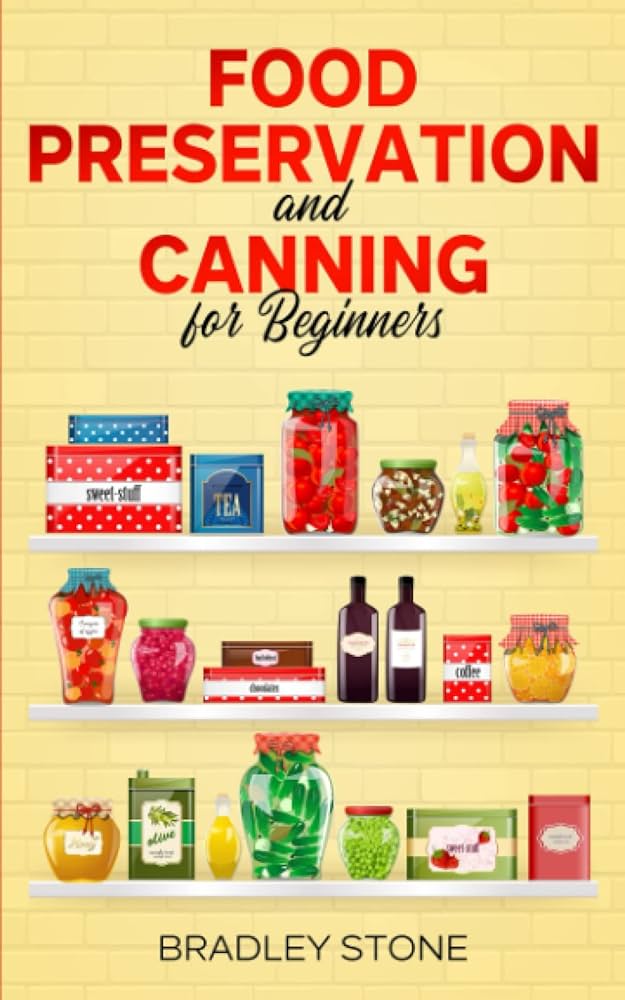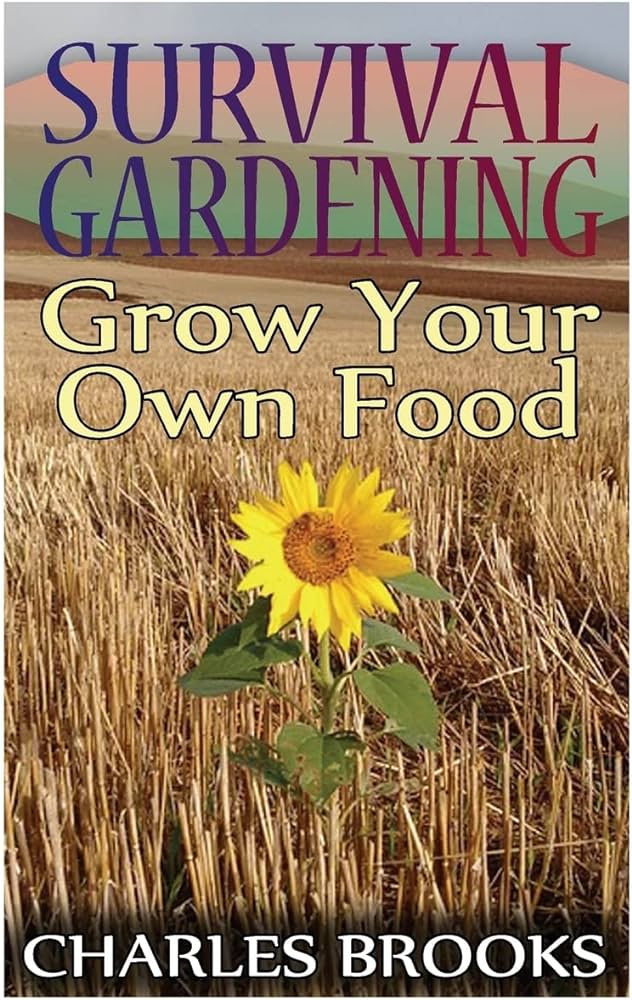Living off-grid requires essential food preservation techniques to ensure long-term sustainability. When it comes to living off-grid, preserving food becomes an essential part of daily routines.
With little access to grocery stores for fresh produce, it is necessary to learn how to store food effectively to provide sustenance throughout the year. For those wanting to live sustainably in remote areas or those seeking to reduce their overall ecological footprint, preserving food through different techniques such as canning, fermentation, and dehydration can save both money and resources.
By preserving food, people can enjoy the fruits of their labor year-round, while also reducing food waste and minimizing their carbon footprint. We will discuss the different ways that people can preserve food when living off-grid.
Table of Contents
Introduction To Living Off-grid
Living off-grid requires essential food preservation techniques. It allows individuals to rely on themselves without access to grocery stores. Storing food properly is necessary for surviving harsh conditions.
Living off-grid means living independently without any dependence on external resources like electricity, water supply, and communication services. It is a lifestyle choice that has gained a lot of interest in recent times because of its sustainability and self-reliance. In off-grid living, people generate their electricity, grow their food, and reduce their dependency on the grid. This lifestyle choice comes with a unique set of challenges and benefits that are worth exploring. This article will delve into what it means to live off-grid, the reasons why people choose this lifestyle, and the challenges and benefits of living off-grid.
What Does It Mean To Live Off-grid?
Living off-grid means living in a self-sufficient manner without relying on the external power grid. It entails generating your electricity, cultivating your food, and sourcing your water. It also means reducing your waste and adopting an eco-friendly lifestyle. Off-grid living requires a significant lifestyle change and self-reliance where people have to become self-sufficient and learn survival skills that will enable them to thrive in a world that is not dependent on modern technology and infrastructure.
Why Would Someone Choose To Live Off-grid?
Living off-grid is a conscious decision that people make for varied reasons. Some prefer the tranquillity and serenity that comes with living away from the city’s hustle and bustle, pollution, and noise. Others want to reduce their carbon footprint, live an eco-friendly lifestyle and protect the environment. For some, it is a way to become self-reliant and less dependent on commercial supply systems. Others find off-grid living an affordable option to sustain their livelihoods.
Challenges And Benefits Of Off-grid Living
Living off-grid has both its challenges and benefits. Off-grid living can be challenging for people who have lived their entire lives in the city and are not accustomed to living in a more rustic setting. Off-grid living requires people to take an active role in generating their power, growing their food, and sourcing their water. This means that they are responsible for maintaining and repairing their infrastructure, which can be daunting.
The benefits of off-grid living are numerous. One of the main advantages of off-grid living is that it is eco-friendly and sustainable. It reduces the carbon footprint, protects the environment, and conserves natural resources. Off-grid living also fosters self-reliance, independence, and creativity in people. It creates an opportunity for individuals to learn new skills, become more resourceful, and engage in new experiences. It also promotes a simpler, healthier lifestyle promoting physical and mental wellbeing.
In conclusion, living off-grid is a lifestyle choice that has gained much interest in recent times. It offers sustainability, self-reliance, and an opportunity to engage in eco-friendly living. While it comes with unique challenges, the benefits are many, from fostering independence and creativity to reducing the carbon footprint and promoting a simpler and healthier lifestyle.
Preserving Food Without Electricity
Preserving food without electricity is a crucial skill for off-grid living. Methods such as canning, smoking, dehydrating, and fermentation can help keep food fresh for longer periods of time without the need for electricity.
Preserving food without electricity
Living off-grid is a popular lifestyle choice for many people today, as it allows them to reduce their reliance on public utilities and live in a more sustainable way. One of the biggest challenges of off-grid living is preserving food without electricity. Most traditional food preservation methods require a reliable source of power, which is not always available in remote locations. However, with the right techniques and equipment, it is possible to preserve food for months without electricity.
Why Is Preserving Food Essential For Off-grid Living?
Preserving food is essential for off-grid living because it allows you to store food for times when it is not readily available. In remote off-grid locations, it can be challenging to access fresh produce regularly, and without a way to preserve it, food will quickly spoil. By preserving food, you can ensure that you always have a supply of nutritious food on hand, even during the winter months when growing your own food is not possible.
Techniques For Preserving Food Without Electricity
There are several techniques for preserving food without electricity, including canning, drying, smoking, fermenting, and pickling. Canning involves packing food into jars and sterilizing them by boiling them in a water bath or pressure canner. Drying involves removing the moisture from food by exposing it to heat and air. Smoking involves exposing food to smoke from burning wood or other materials. Fermenting involves allowing bacteria or yeast to break down food, creating a tangy, flavorful product. Pickling involves soaking food in a mixture of vinegar, salt, and spices to preserve it.
Benefits Of Preserving Food Without Electricity
Preserving food without electricity has many benefits for off-grid living. Firstly, it allows you to store food for longer periods, reducing waste and ensuring a constant supply of nutritious food. Secondly, it allows you to eat a wider variety of foods throughout the year, as preserved foods can be stored and enjoyed even when they’re out of season. Finally, preserving food without electricity is a sustainable practice, reducing your reliance on public utilities and allowing you to live a more self-sufficient lifestyle.
Root Cellars And Canning
Preserving food is crucial for off-grid living, and root cellars and canning are two essential methods for doing so. Root cellars provide a cool place to store produce, while canning allows food to be stored for longer periods of time without refrigeration.
Root cellars and canning are essential parts of living off the grid and preserving food. Root cellars are underground structures that provide constant cool temperatures and high humidity, perfect for storing produce. Canning allows you to preserve food through the use of heat and airtight containers. In this blog post, we will explore the benefits of these methods and provide tips and techniques for building and maintaining a root cellar and canning food effectively.
What Is A Root Cellar And How Does It Work?
A root cellar is an underground room or structure that provides natural refrigeration and humidity to store produce such as root vegetables, fruits, and nuts. By regulating temperature and humidity levels, root cellars can keep produce fresh for long periods, even up to several months. When food is stored in a root cellar, it is kept cool by the natural air circulation, which creates a constant temperature range between 30 and 40 degrees Fahrenheit and high humidity levels of 80-95%.
How To Build And Maintain A Root Cellar
Building a root cellar requires careful consideration of location, material, and design. The root cellar should be located in a cool, dry place away from direct sunlight, and the surrounding soil should have good drainage to prevent water accumulation. The cellar can be built from various materials, including cinder block, wood, or concrete, and should have proper ventilation to allow airflow. To maintain your root cellar, regularly check for moisture levels and proper temperature and humidity. A thermometer and hygrometer can help you monitor levels and adjust as necessary. Additionally, make sure to store produce properly, keeping it off the ground and away from each other to prevent spoiling.
Canning Techniques And Tips
Canning is a method of preserving food by heating it inside airtight containers such as glass jars. The heat kills bacteria, and the vacuum seal prevents spoiling. To begin canning, wash and sterilize jars and lids, then pack the jars with your chosen food, leaving space at the top for expansion. Once the jars are filled, place them in a water bath or pressure canner according to the recipe and processing time. Once the jars are filled and sealed, store them in a cool, dry place away from sunlight. When ready to eat, simply open the jar and heat the contents. Pro tip: safety is crucial when it comes to canning, so always follow safe and tested recipes, sterilize equipment before use, and never reuse lids or jars that are damaged or worn out.
Living off the grid and preserving food can be a rewarding and sustainable way of life. By utilizing root cellars and canning techniques, you can extend the shelf life of your produce and enjoy fresh, delicious meals all year round. With the right tools, materials, and knowledge, you can create a long-lasting food storage system and reduce your reliance on grocery stores and modern conveniences.

Credit: offgridliving.net
Dehydration And Fermentation
To preserve food off the grid, dehydration and fermentation make excellent choices. Dehydration removes moisture from food to prevent bacterial growth, while fermentation relies on good bacteria to preserve the food. Both techniques allow for long-term storage of essential foods without the need for refrigeration or electricity.
Living off-grid means being self-sufficient in every way, including food preservation. While there are many ways to preserve food, dehydration and fermentation are two of the most popular techniques. Dehydration involves removing liquids from food to prevent bacteria growth and spoilage, and fermentation uses naturally occurring bacteria to preserve food. In this article, we will explore how these methods work and how to apply them to living off-grid.
What Is Food Dehydration And How Does It Work?
Food dehydration is a way of preserving food by removing moisture from it. When food has no moisture, it cannot support bacteria growth and spoilage. Dehydration also reduces the food’s weight, making it easier to transport and store. To dehydrate food, you need to remove as much moisture as possible without cooking it.
How To Make A Dehydrator And Preserve Food
The simplest way to dehydrate food is to use the sun. However, this process can take several days, and the weather needs to be consistently hot and dry for the best results. A solar dehydrator will help speed up the process, but it needs to be made from weather-resistant material. Alternatively, you can use an electric dehydrator, which is faster and more consistent but requires a power source.
To dehydrate food, slice it thinly and lay it out in a single layer on the dehydrator tray. Don’t overlap the food slices, or they won’t dry evenly. Place the trays inside the dehydrator and set the temperature to 120-140°F. The drying time will vary depending on the type of food and how thickly you slice it.
Fermentation Techniques For Preserving Food
Fermentation is a natural preservation technique that involves beneficial bacteria breaking down sugars and starches in food, creating lactic acid. This acid lowers the pH level of the food, creating an environment that inhibits the growth of harmful bacteria.
Foods such as sauerkraut, kimchi, and pickles are fermented. You can also ferment milk to make yogurt and cheese. To ferment food, you need to create the right environment of temperature, time, and acidity. Normally, you would use fermentation crocks that have a lid with an airlock to keep bacteria out while allowing gases to escape.
In conclusion, knowing how to preserve food through dehydration and fermentation is essential for living off-grid. Food preservation techniques allow you to store food for long periods without relying on refrigeration or wasting excess produce. By dehydrating and fermenting food in a sustainable and eco-friendly manner, you can enjoy delicious and nutritious meals with minimal impact on the environment.
Hunting, Foraging, And Fishing For Food
Living off the grid means being self-sufficient, and that includes finding sources of food in the wild. Hunting, foraging, and fishing are essential skills to learn if you want to thrive off the land. Not only can these methods provide you with fresh and nutrient-rich food, but they can also be a source of income if you choose to sell your catch. Here are some tips for successful hunting and fishing, as well as foraging for food in the wild.
What Are Some Tips For Successful Hunting/fishing?
- Know the habits and patterns of your prey. Understanding the behavior of the animals you’re hunting or the fish you’re trying to catch can increase your chances of success.
- Use the right equipment. Having the appropriate hunting or fishing gear for your specific target can make all the difference.
- Be patient. Hunting and fishing require a lot of waiting and observation, so it’s essential to have patience and persistence.
- Be respectful of nature. When hunting or fishing, it’s important to follow regulations and take only what you need without disrupting the ecosystem.
How To Forage For Food In The Wild
Foraging is the act of gathering wild edible plants, berries, nuts, and fungi. It’s important to do your research and know which plants are safe to eat and which ones to avoid. Here are some tips for successful foraging:
- Learn to identify edible plants in your region. Take a foraging class or read up on the subject before setting out.
- Bring a field guide or plant identification app to help you identify unfamiliar specimens.
- Harvest only what you need and leave some behind for wildlife.
- Be mindful of the environment and don’t pick plants from contaminated areas or endangered species.
Preserving Animal And Plant Foods
Preservation is the key to making your wild-sourced food last longer. Here are some methods for preserving animal and plant foods:
| Animal Foods | Plant Foods |
|---|---|
| Canning | Pickling |
| Smoking | Drying |
| Jerking (drying meat) | Freezing |
| Salting | Jam/jelly making |
Learning how to successfully hunt, fish, and forage for food is an essential part of living off the grid. With these tips, you can increase your chances of success and ensure that your food supply is preserved for long-term sustainability.

Credit: www.etsy.com
Designing A Food Preservation System For Off-grid Living
Designing a food preservation system for off-grid living is essential in ensuring sustainability and independence. Storing food without electricity requires thoughtful planning, efficient use of resources, and knowledge of preservation techniques to maintain the quality and safety of the food.
Living off-grid comes with its own set of challenges, especially when it comes to preserving food. Unlike in cities, where people have the luxury of using electricity to refrigerate their food items, off-grid living requires a well-planned system for food preservation. Designing a food preservation system for off-grid living is crucial for long-term food sustainability and to avoid any food wastage. Let’s dive deeper and explore the factors to consider while designing a food preservation system, the right techniques to choose from and tips for maintaining the system.
Factors To Consider When Designing A Food Preservation System:
While designing a food preservation system, several factors need to be considered, starting from the availability of resources to climate conditions and the food items you plan to preserve. Here are some key factors to consider:
- Availability of resources: Living off-grid means access to electricity and other resources is limited, and it requires careful consideration of the type of equipment and materials needed for the preservation system.
- Climate conditions: Climate conditions vary widely in different regions, so it’s essential to consider the ideal method of preservation based on the humidity, temperature, and other weather factors that influence the lifespan of the food.
- Food items to preserve: Different food items require different preservation methods. It’s important to plan carefully based on the food items you plan to preserve to avoid any food wastage.
- Timeframe for preservation: The timeframe for preservation is another important factor to consider. Some methods of preservation such as canning can preserve food items for years, while others like drying only last for a few months.
Choosing The Right Food Preservation Techniques For Your Situation:
Choosing the right preservation technique can significantly impact the lifespan of your food items. Here are some common food preservation techniques suitable for off-grid living:
| Preservation Technique | Key Features |
|---|---|
| Canning | Provides long-term preservation (1-5 years) without refrigeration. Ideal for fruits, vegetables, jams, and pickles. |
| Drying | Provides medium-term preservation (6 months to a year). Ideal for herbs, fruits, and vegetables. |
| Smoking | Provides a short-term preservation (a few weeks to a month). Ideal for meat, poultry, and fish. |
| Fermenting | Provides a long-term preservation (1-2 years) without refrigeration. Ideal for vegetables, fruits, and dairy products. |
Tips For Maintaining Your Food Preservation System:
Having a well-maintained preservation system is crucial for preserving food for long-term use. Here are some tips to ensure your food preservation system is working optimally:
- Store your preserved food items in a cool and dry place to avoid exposure to moisture and high temperatures.
- Inspect your preserved food items regularly and discard any food that shows signs of spoilage.
- Maintain the equipment used for preserving your food items regularly, such as cleaning them after use and checking for any damage.
- Ensure you have a backup/portable power supply, such as a solar generator, to support the food preservation system in case of power outages.
In conclusion, living off-grid requires careful planning for food preservation. Designing a food preservation system involves considering essential factors such as the availability of resources, food items, climate conditions, and timeframe for preservation. Choosing the right preservation technique for your situation is crucial for optimal preservation, and regular maintenance of the preservation system can ensure long-term sustainability.

Credit: www.amazon.com
Conclusion
The benefits of living off-grid and preserving food cannot be overstated. Not only does it provide a sense of self-sufficiency and independence, but it also helps to reduce food waste and impact on the environment. With the right knowledge and skills, anyone can successfully live off-grid and preserve food for themselves and their communities.
It is a lifestyle choice that promotes sustainability and resilience in the face of uncertain times. So why not take the first step towards this rewarding way of life today?









